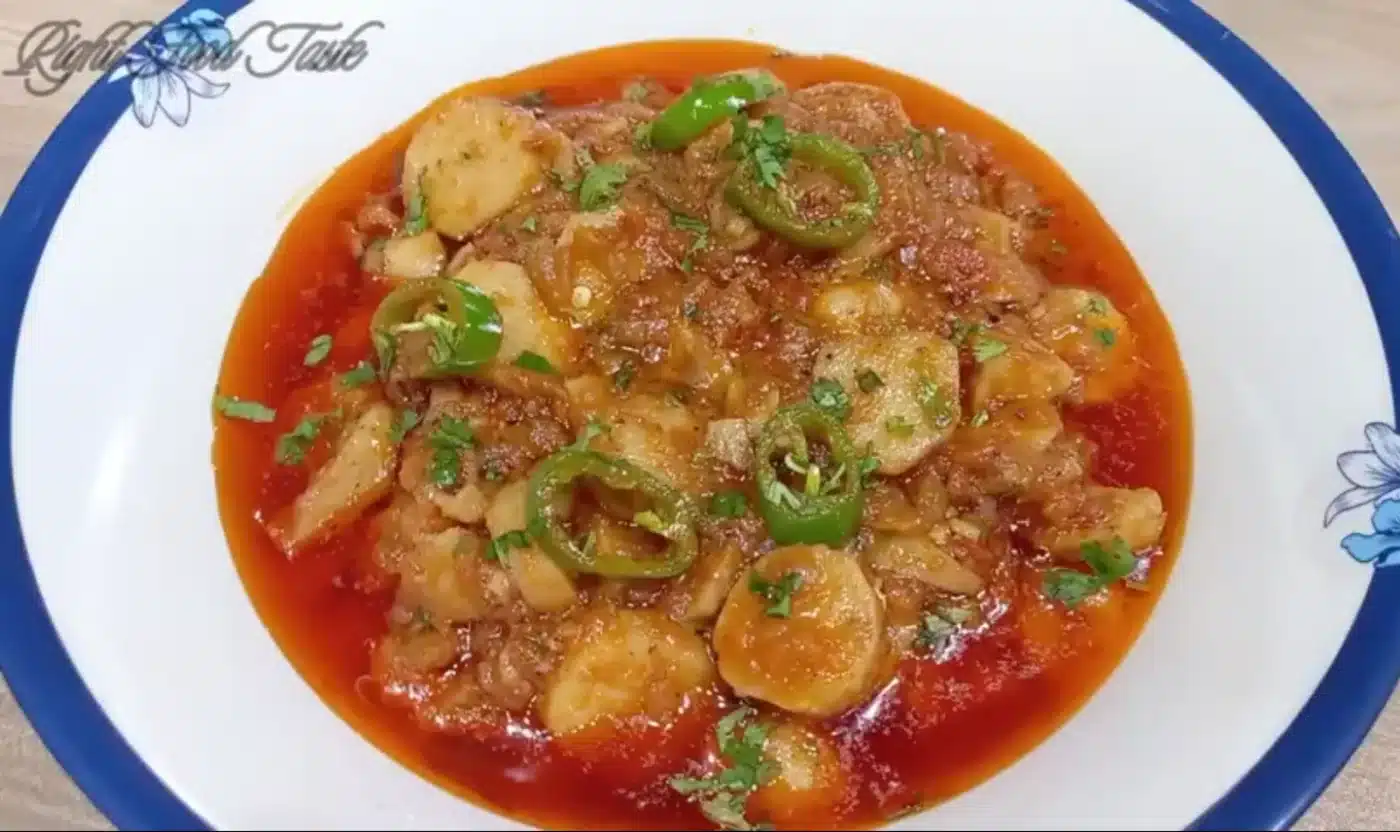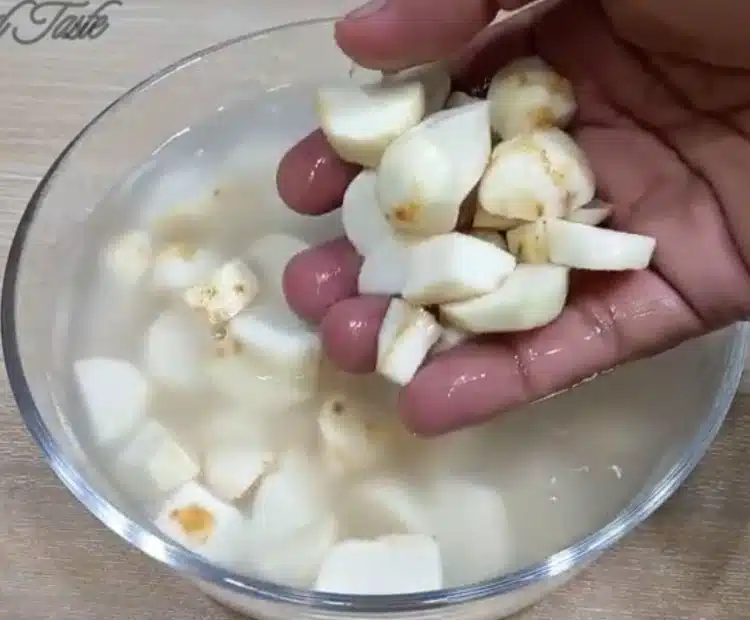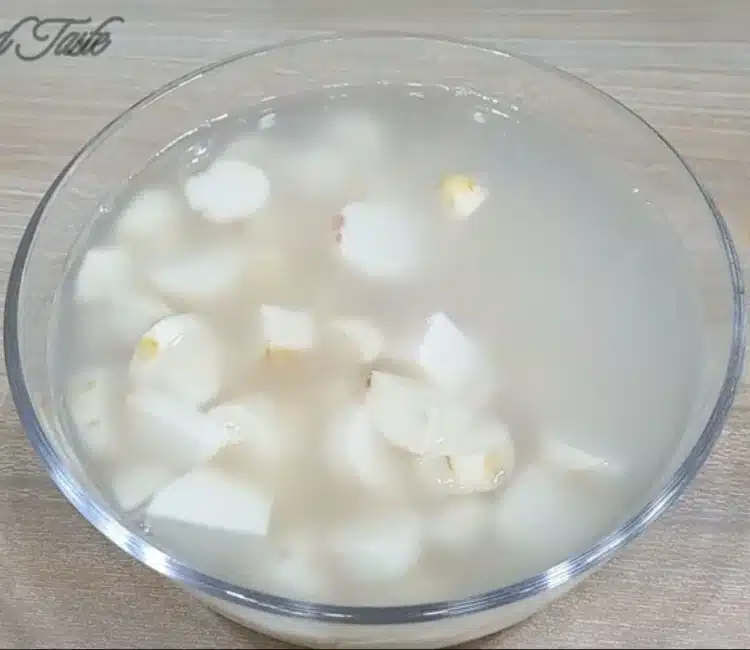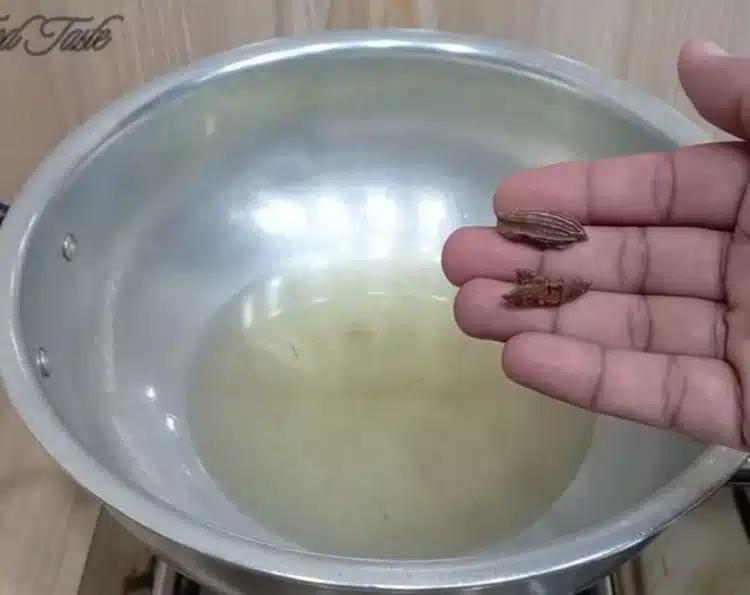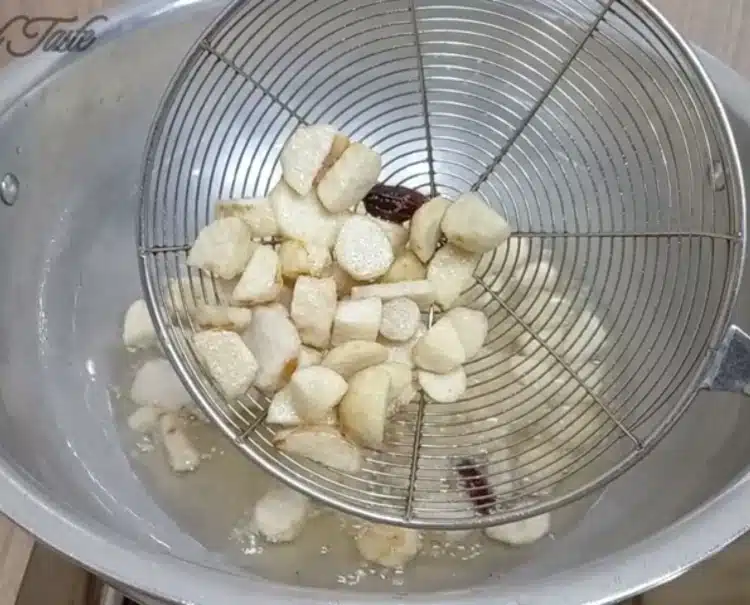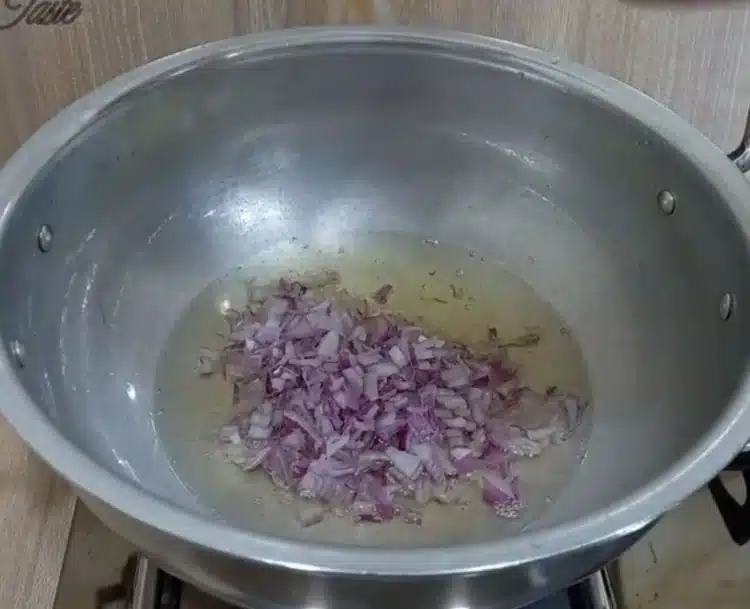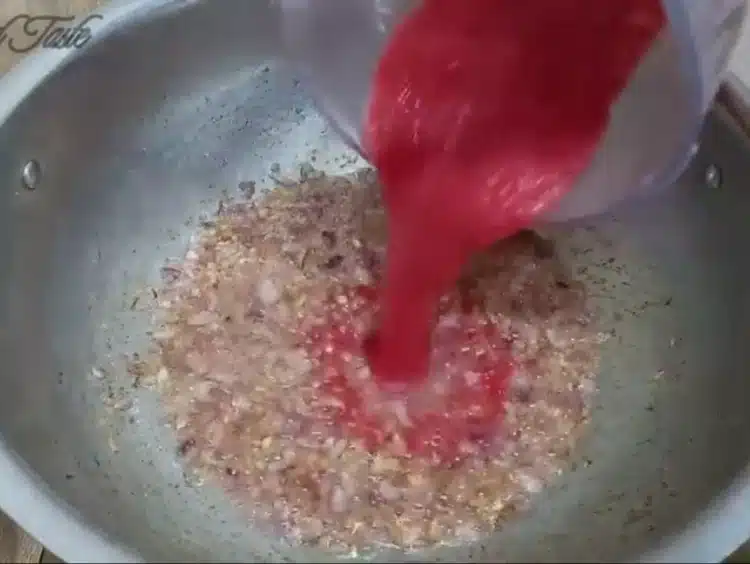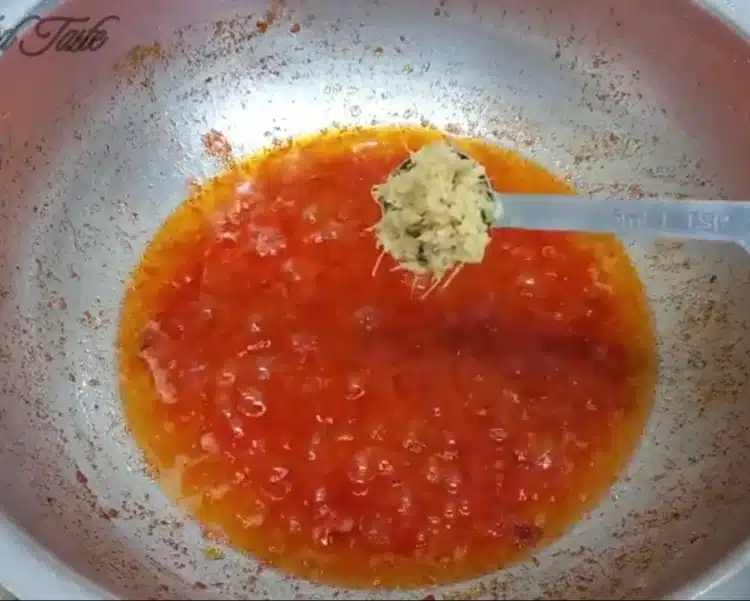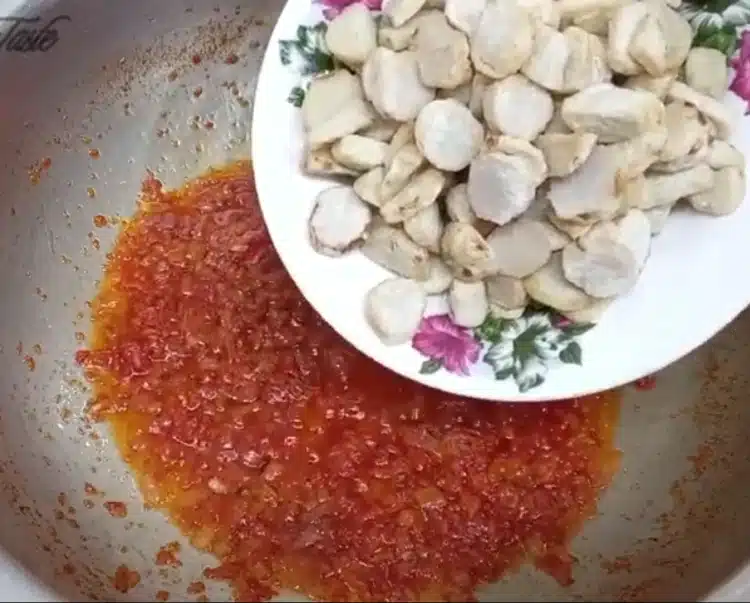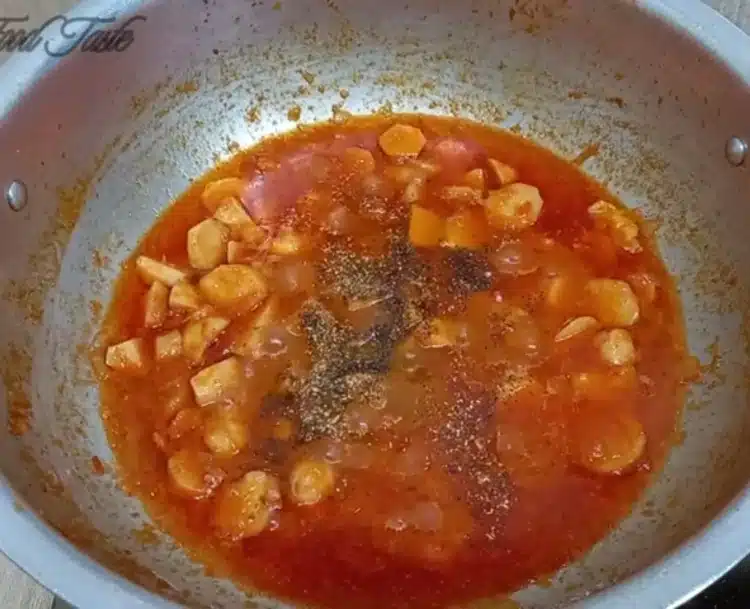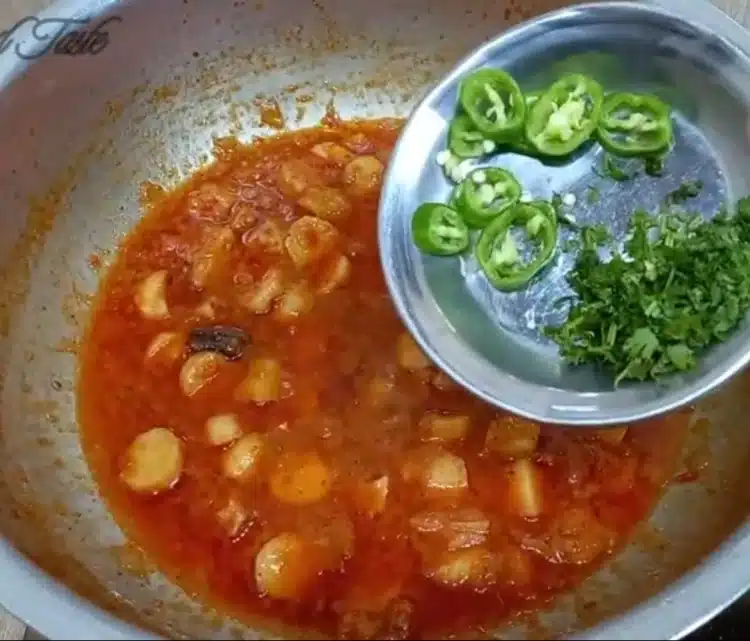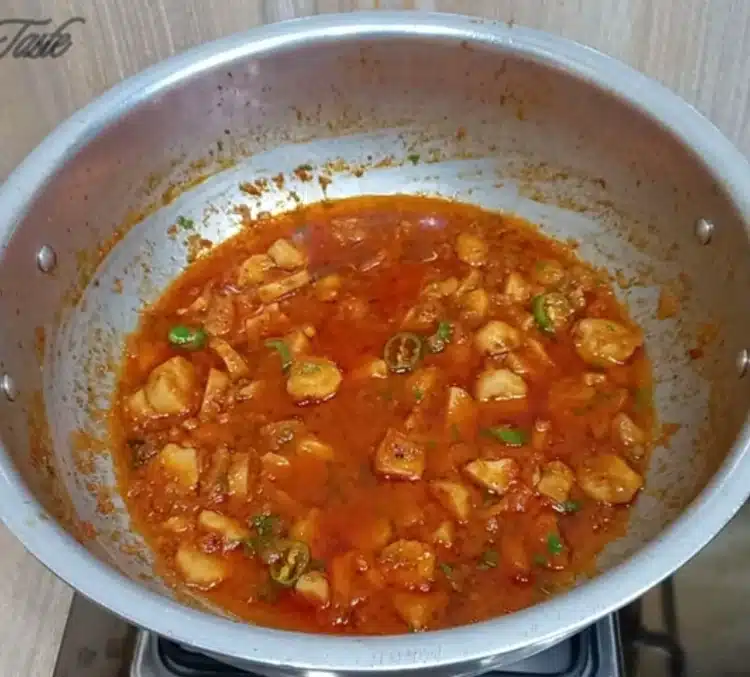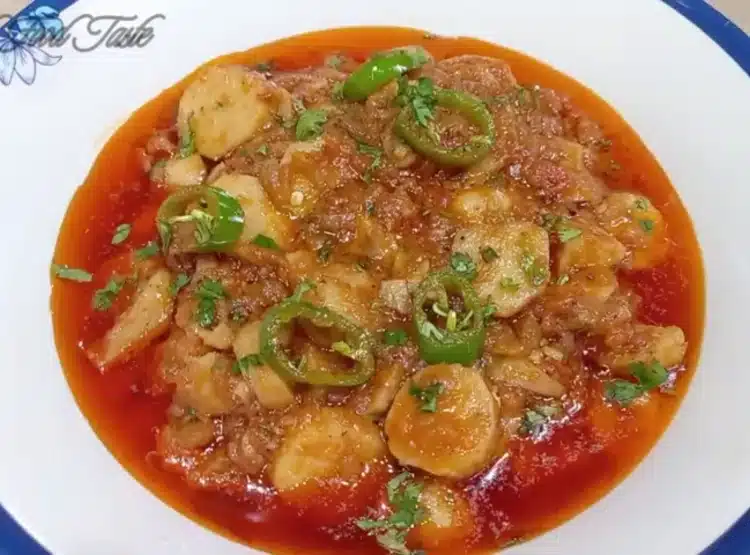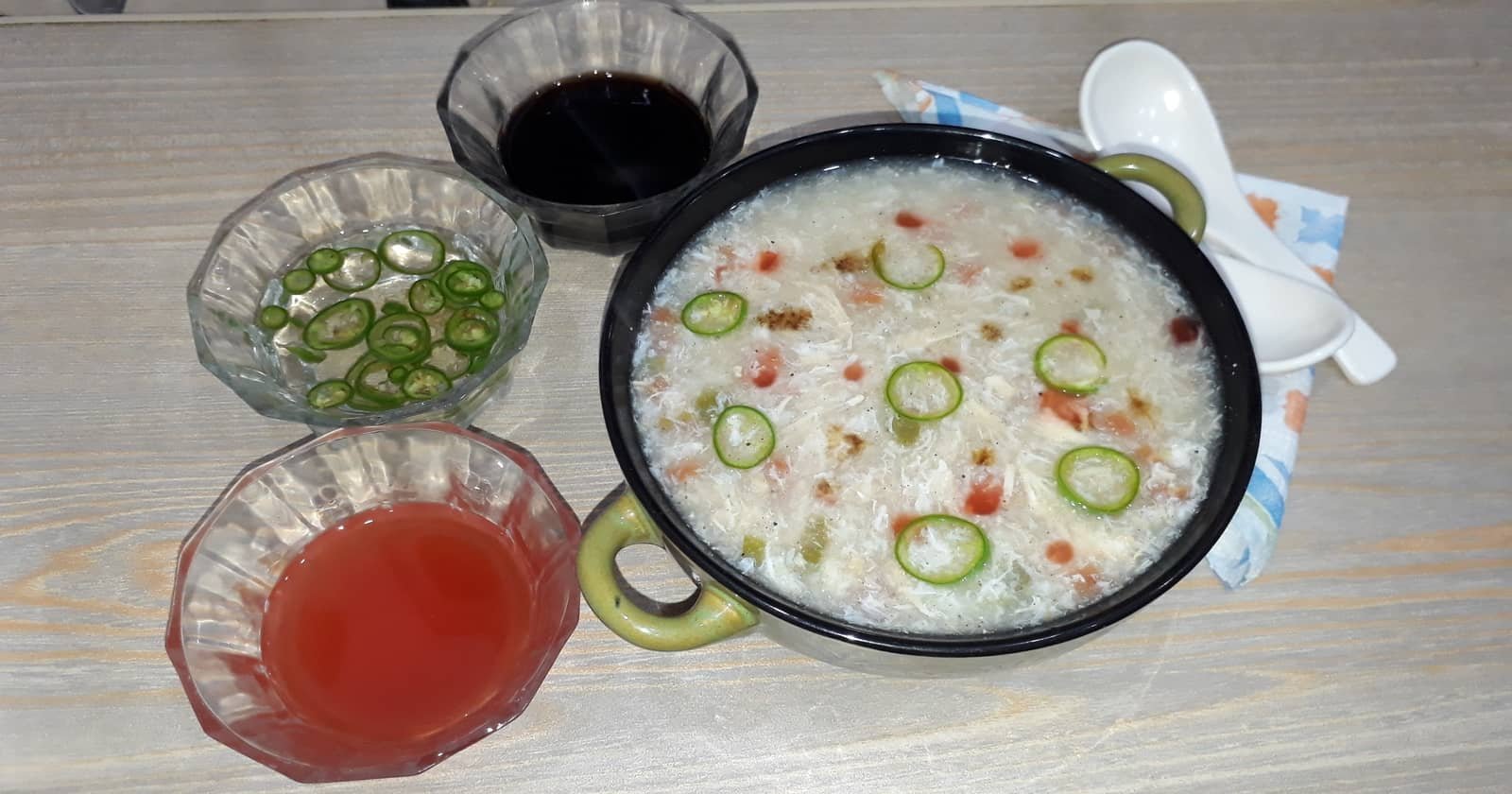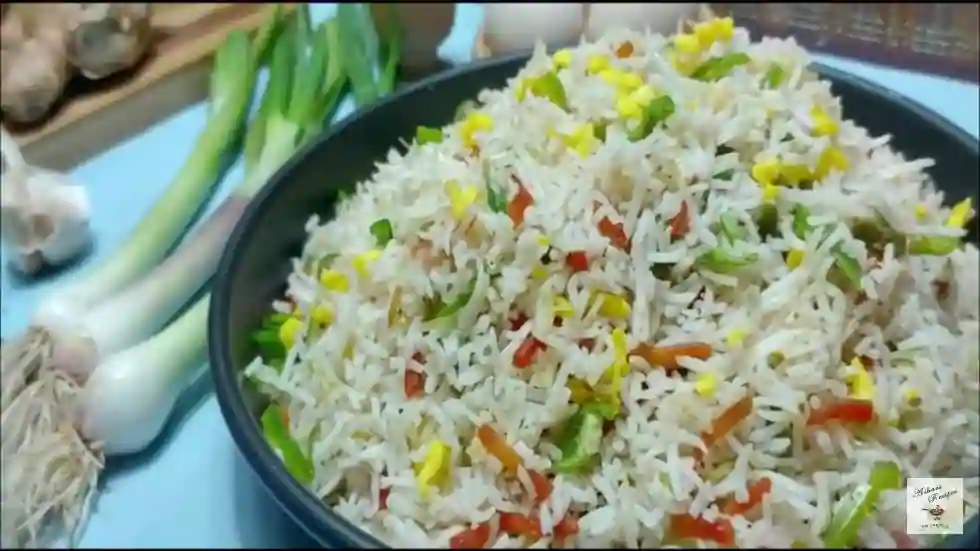The Taro root recipe is a delicious and healthy recipe that can be enjoyed by everyone. How to cook taro root is a perfect recipe for those who are looking for an alternative to the traditional potato dish. Taro root masala is cooked with boiled or fried taro and a variety of spices, herbs, and other seasonings.
This is a delicious and easy taro root masala dish that will undoubtedly complement your usual meals. You can have a wonderful and perfectly seasoned root veggie for your meals with this simple and quick preparation.
If you’re looking for an alternative to your favorite potato recipe, try taro (arbi) for a quick and tasty dish. Although the texture and flavor are extremely comparable, they do not require the same amount of time to cook.
Taro has a distinct flavor and is commonly prepared with carrom seeds (ajwain) in Indian cuisine. Like other classic Indian curries, it is served with flatbreads like roti, naan, or chapati, as well as with steamed rice.
What is Taro?
Taro is a starchy root that grows abundantly during the rainy season in the Indian subcontinent. It is harvested throughout Asia. It naturally possesses hot and sticky properties. In fact, when cooked individually, taro has a hot effect on the body, whereas when cooked with meat, it becomes moderate.
Taro root, like other tubers, is known by several names. In various parts of the world, this tuber is also known as dasheen or eddo. It has a slightly nutty and earthy flavor and is often used in curries and stews.
Taro (colocasia) is popular in Indian and Pakistani cuisines. In Hindi, this vegetable is known by several names, including arbi, arvi, and ghuiya. This is a lesser-known vegetable outside Indian cuisine but a delicious and healthful vegetable.
Taro vegetable in Indian style
Taro root curry (arbi ki sabzi) is a delicious and easy-to-make Indian dish. It is made by tossing cooked taro in a well-seasoned masala prepared with onion, tomato, and aromatics. It can be served as a side dish or as a main course.
This is a dry or semi-dry curry that goes well with rice or flatbread (roti) and is also known as arbi ki sabji in Hindi.
Taro vegetables can be made in a variety of ways, including a simple stir-fry with simple spices, a masala or curry version, or a semi-dry version like the one I’m sharing here.
Cooking Taro
In this recipe, you’ll learn how to prepare taro root at home quickly and easily. You should choose fresh vegetables. If fresh taro root is not available, you can substitute frozen or sliced taro.
Fry the taro first, then prepare the onion tomato masala, well-seasoned with spices and aromatics that your taste buds will like. Finally, add taro to the onion tomato masala to make a delightful semi-dry taro root curry.
If you’ve never tried taro before, try it this way for a wonderful and spicy dish.
How do you remove stickiness from Taro?
Taro root possesses sticky or gummy properties. There are a few things that you can do to remove its stickiness before cooking. First, you can try rinsing the diced vegetable with warm water. If the stickiness persists, you can try soaking the vegetable in a mixture of vinegar and water.
You can also use salty water to remove its stickiness. Pour one tablespoon of salt into a bowl of water. Soak taro root (diced into desirable pieces) in this salt water and set it aside for one hour to eliminate the stickiness.
After one hour drain the water and rinse the taro two to three times with fresh water.
How to Cook Taro Root
Preparation
First, peel the taro root and then dice it into desirable pieces. To avoid itching, you may apply oil to your fingers and palms or use gloves while cleaning and chopping it.
To remove its stickiness, pour water into a bowl and add one tablespoon of salt. Immerse taro pieces in this water and set them aside for one hour.
After one hour most of the stickiness of the taro will be removed. Next, drain off the water and rinse the taro two to three times with fresh water.
To dry the taro, keep it in the colander or strainer for some time till the extra water drains off.
Frying the Taro Root
Before making taro root curry, first, we’ll fry it. We can make the curry without frying it but frying the taro gives a good taste. Place the wok on the stovetop and pour one cup of cooking oil into it.
To enhance its taste further, we add a big cardamom and half of the star anise (badyan flower).
Let heat the oil. Add taro and fry it on medium to high flame till light golden color and then transfer it to a plate.
Preparing Masala with Onion and Tomato
Now prepare masala for taro curry. Prepare the masala in the same oil in which you have fried the taro. Transfer half of the oil to a bowl and set it aside. Half of the oil in the wok is sufficient to prepare the masala.
Add finely chopped onion. Sauté the onions for 2 to 3 minutes. Now add garlic paste. If you see onions sticking to the bottom of the wok, you can add some water. Fry them on medium flame till light golden color.
Next, add tomato paste. Prepare fresh tomato paste in a blender. Add tomato paste to the masala. Pour some water into the blender to dissolve the residual paste into it and then pour it into the wok. Fry it for 2 to 3 minutes. Next, add ginger paste and sauté well for 3 to 4 minutes.
Seasoning the Taro Root Masala
Now add salt, turmeric powder, and red chili powder. At this stage, we’ll add only three spices. Sauté well for 3 minutes until they are fragrant. Now masala for taro is ready.
Add fried taro to the masala. Sauté for 4 to 5 minutes. The best-fried masala determines the best flavor of taro curry. Keep the flame medium. Now add 2 cups of water to the taro curry. Mix it and cover the wok for 8 to 10 minutes and turn the flame medium-to-low to simmer the curry.
After 10 minutes remove the cover and check one piece of taro. If it needs more cooking then cover the wok again and continue till cooks through. Keep the consistency of curry to your choice.
Now season it with the three remaining spices; cumin powder, coriander powder, and coarsely ground black pepper. This seasoning gives a wonderful taste to the taro curry. Add these spices only one minute before the cooking finish.
Garnishing the Curry
Now add one sliced green chili and chopped coriander leaves. Mix them, cover the wok, turn off the flame, and keep the wok on the stovetop for 5 minutes. After 5 minutes when you remove the cover you will feel the wonderful aroma and fragrance of the taro masala curry.
Finally, dish out the curry and garnish it with chopped coriander leaves. Surely, you’ll like and enjoy this recipe. Must try it at home and serve it with flatbreads like roti, naan, or chapati, as well as with steamed rice.
Tips for the Best Taro Root Recipe
- While peeling and chopping the taro, apply oil to your fingers and palms or use gloves to avoid itching.
- Taro possesses sticky or gummy properties. To remove its stickiness, rinse the diced vegetable with warm water or soak it in a mixture of salt and water.
- The best-fried masala determines the best-tasting taro curry.
- Simmer the curry on a medium-to-low flame to infuse the fragrance and taste of masala and seasoning into the taro but ensure not to overcook. With overcooking, the taro may get gooey or mushy.
- To have a wonderful taste of the curry, add seasoning spices only one minute before the cooking finishes.

Taro Root Recipe
Ingredients
- ½ kg taro root
- 125 gram onion
- 250 gram tomato paste
- 1 tsp salt or to taste
- ½ tsp turmeric powder
- ½ tsp red chili powder
- ¼ tsp black chili powder
- ½ tsp black cumin powder
- ½ tsp coriander powder
- 1 tsp garlic paste
- 1 tsp ginger paste
- 1 big cardamom
- ½ star anise
- 1 cup cooking oil
- 2 cup water
- fresh green chili and coriander leaves for garnishing
Instructions
How to Cook Taro
- Choose fresh taro root. If the fresh root is not available, you can substitute frozen or sliced taro.

- Peel the taro and then cut it into desirable pieces. To avoid itching while cleaning and chopping, you may apply oil to your fingers and palms or use gloves.

- To remove its stickiness, pour one tablespoon of salt into a bowl of water. Soak the diced taro root in this salty water and set it aside for one hour.Now drain the water and rinse the taro two to three times with fresh water. Then keep it in the colander or strainer to dry.

Frying the Taro Root
- Before making the curry, first, fry taro root. Place the wok on the stovetop and pour one cup of cooking oil into it. Add a big cardamom and half of the star anise (badyan flower).

- Let heat the oil. Add chopped taro and fry it on a medium to high flame till light golden color and then transfer it to a plate.

Preparing Masala with Onion and Tomato
- Prepare the masala in the same oil in which you have fried the taro. Keep half of the oil in the wok and transfer the remaining oil to a bowl and set it aside.Add finely chopped onion. Sauté the onions for 2 to 3 minutes.

- Next, add garlic paste. When you see the onions sticking to the bottom of the wok, add some water. Fry them on medium flame till light golden color.Now add tomato paste. Fry it for 2 to 3 minutes.

- Next, add ginger paste and sauté well for 3 to 4 minutes.

Taro Masala Seasoning
- Now add salt, turmeric powder, and red chili powder. Sauté well for further 3 minutes until they are fragrant. Masala for taro is ready now.

- Add fried taro to the masala. Sauté for 4 to 5 minutes. Keep the flame medium.

- Now add 2 cups of water to the taro curry. Mix it and cover the wok. Simmer the curry for 8 to 10 minutes on a medium-to-low flame.After 10 minutes remove the cover and check one piece of taro. If it needs more cooking then cover the wok again and continue till cooked through but avoid over-cooking. Keep the consistency of curry to your choice.

- Now season it with cumin powder, coriander powder, and coarsely ground black pepper. Add these spices only one minute before the cooking finish.

Garnishing the Curry
- Next, add one sliced green chili and chopped coriander leaves.

- Mix them and cover the wok and turn off the flame. Keep the wok on the stovetop for 5 minutes.

- Finally, dish out the curry and garnish it with chopped coriander leaves and enjoy your homemade dish with roti, naan, or chapati, as well as with steamed rice.

